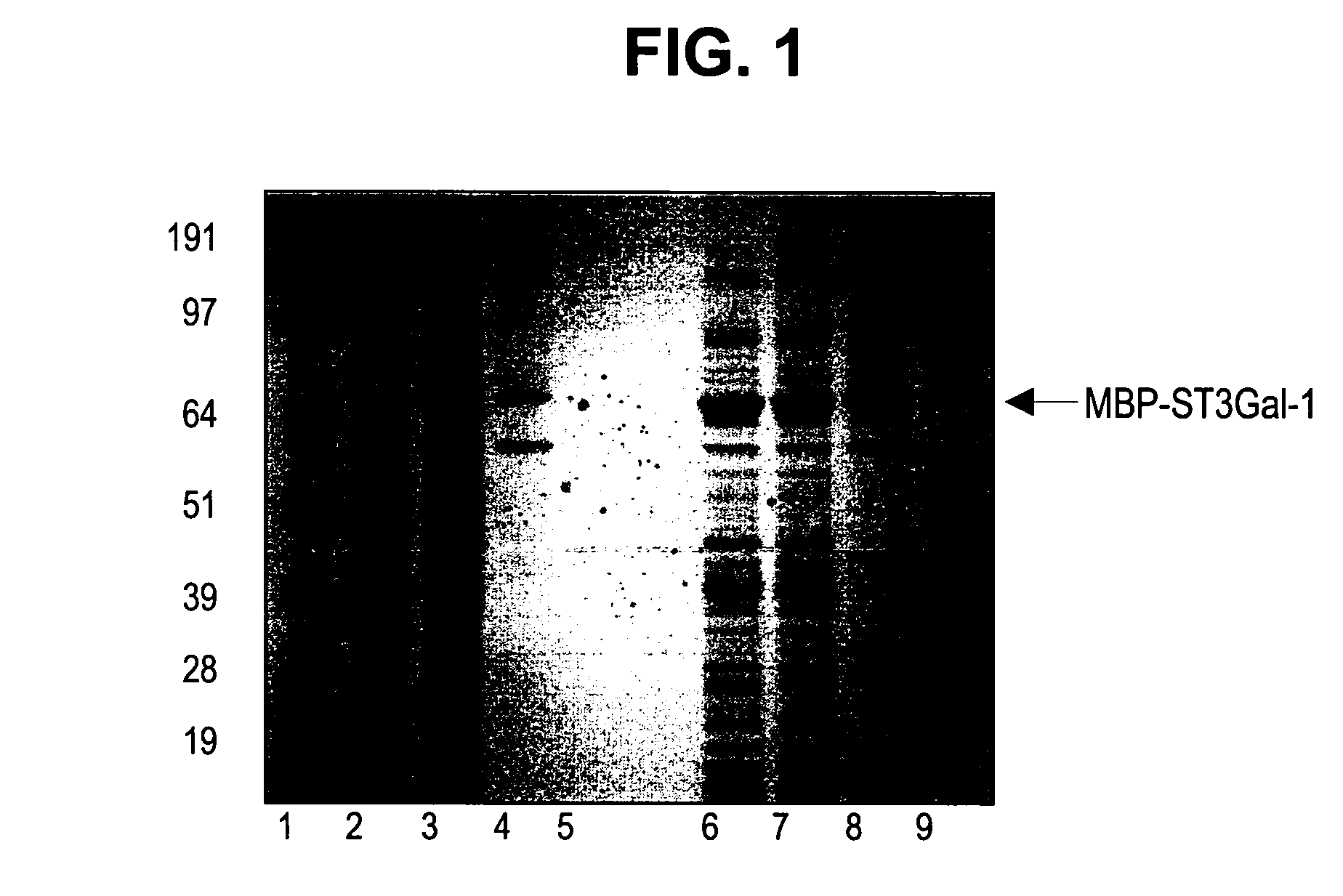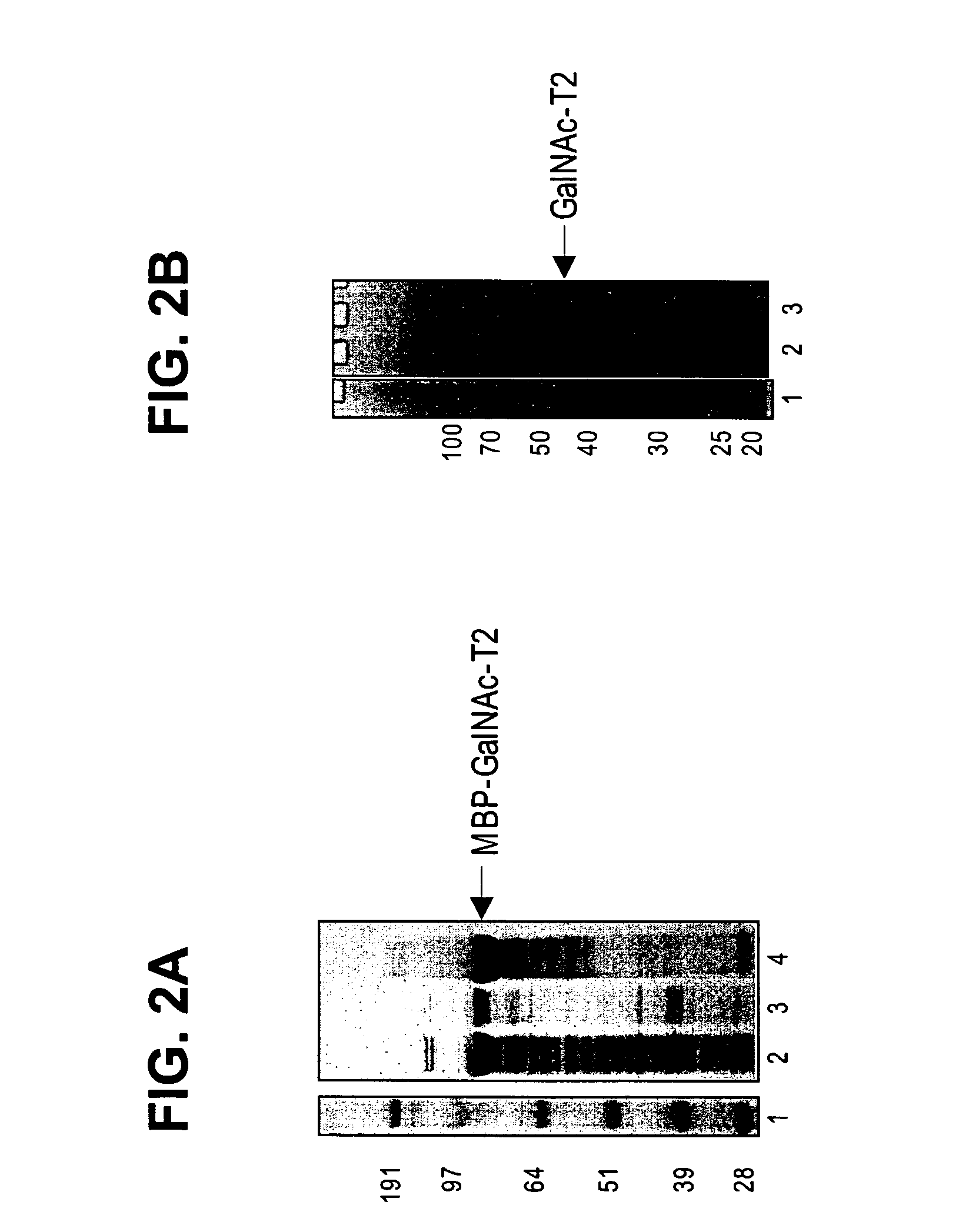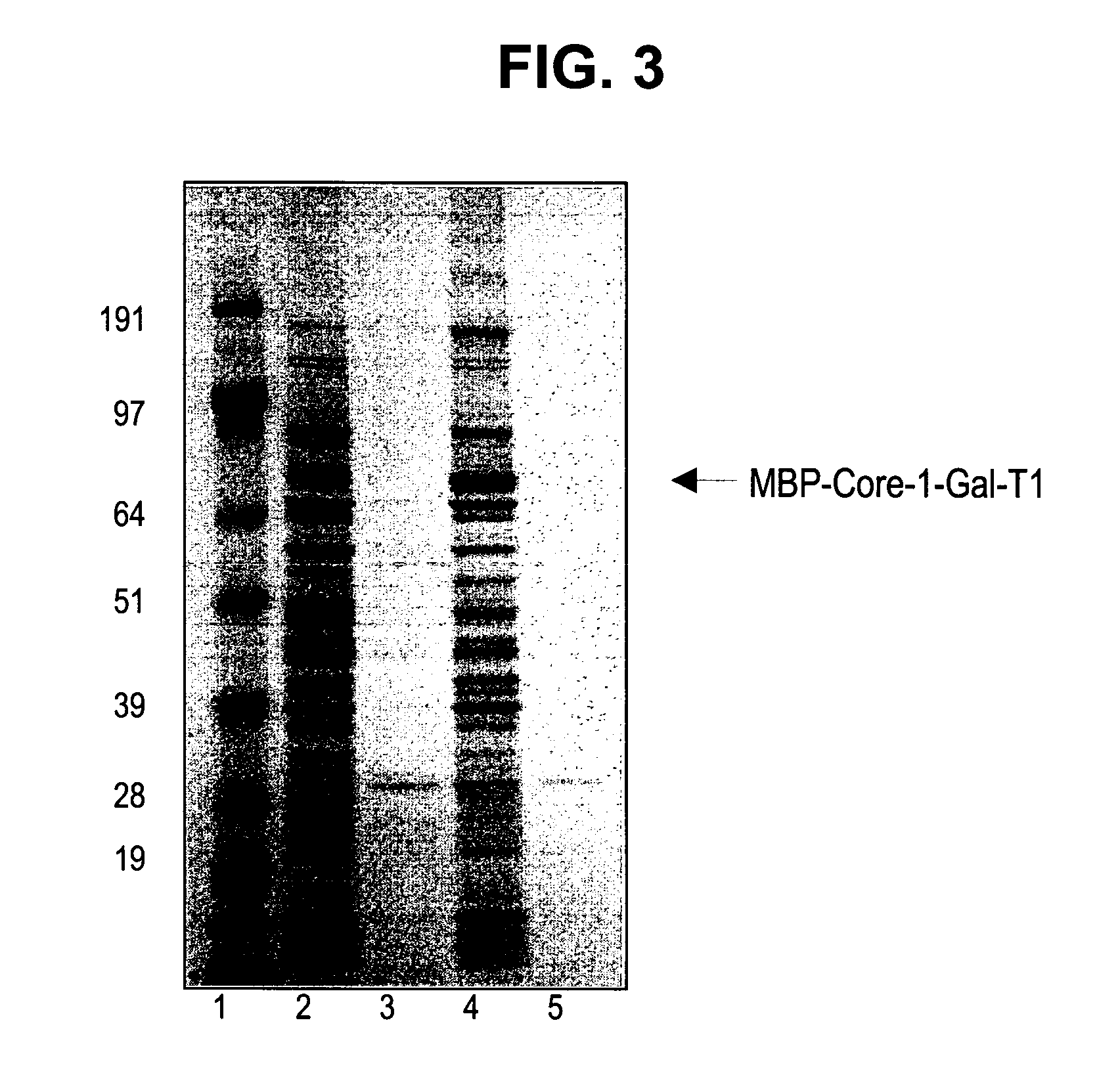Expression of soluble, active eukaryotic glycosyltransferases in prokaryotic organisms
a technology of eukaryotic glycosyltransferase and soluble eukaryotic glycosyltransferase, which is applied in the direction of transferases, drug compositions, enzymology, etc., can solve the problems of reducing the expectation of expression and the yield of active eukaryotic glycosyltransferase protein can be very
- Summary
- Abstract
- Description
- Claims
- Application Information
AI Technical Summary
Benefits of technology
Problems solved by technology
Method used
Image
Examples
example 2
Expression of Eukaryotic Glycosyltransferases from the N-Linked Oligosaccharide Pathway
[0240] General Procedures
[0241] Constructs were designed to express maltose binding protein (MBP) fusions to amino-terminal truncations of the glycosyltransferases. Constructs are designated with a Δ(number) referring to the number of amino acids removed from the amino-terminus of the corresponding native protein. The following constructs were used: human MBP-GnT 1 (Δ103), bovine MBP-GalT1 (Δ129), and rat MBP-ST3Gal3 (Δ72) and MBP—SBD-ST3Gal3 (Δ72; SBD is the starch binding domain tag, inserted between the MBP and the catalytic domain), and human MBP-ST6GalNAc-1 (Δ35). For GnT1 and GalT1, an alternate version of each enzyme bearing a single missense mutation was also tested. Nucleic acids encoding the enzymes were typically cloned into the BamHI-XhoI or BamHI-EcoRI sites of pCWin2-MBP. See, e.g., PCT / US05 / 00302, filed Jan. 6, 2005, which is herein incorporated by reference for all purposes. Clon...
example 3
Expression of Eukaryotic Glycosyltransferases in Pseudomonas.
[0252] General Procedures
[0253] Activities of the following eukaryotic glycosyltransferases were tested in a Pseudomonas expression system: two N-terminal truncations of porcine ST3Gal-1, and chicken ST6GalNAc-1. Constructs, with (A number) referring to the number of amino acids removed from the amino-terminus of the corresponding native protein, were: porcine ST3Gal-1 (Δ45), porcine ST3Gal-1 (Δ56), and chicken ST6GalNAc-1 (Δ231). The glycosyltransferases were fused to a Pseudomonas secretion sequence wherein expression is targeted to the periplasm, and / or were expressed as unfused proteins targeted to the cytoplasm. Expression was driven by the IPTG inducible Ptac promoter. Cloning was performed using standard techniques (e.g. Current Protocols in Molecular Biology, Ausubel, F M, et al, eds. John Wiley & Sons, Inc. 1998).
[0254] Plasmids comprising nucleic acids that express the glycosyltransferases were transformed int...
PUM
| Property | Measurement | Unit |
|---|---|---|
| Temperature | aaaaa | aaaaa |
| Temperature | aaaaa | aaaaa |
| Solubility (mass) | aaaaa | aaaaa |
Abstract
Description
Claims
Application Information
 Login to View More
Login to View More - R&D
- Intellectual Property
- Life Sciences
- Materials
- Tech Scout
- Unparalleled Data Quality
- Higher Quality Content
- 60% Fewer Hallucinations
Browse by: Latest US Patents, China's latest patents, Technical Efficacy Thesaurus, Application Domain, Technology Topic, Popular Technical Reports.
© 2025 PatSnap. All rights reserved.Legal|Privacy policy|Modern Slavery Act Transparency Statement|Sitemap|About US| Contact US: help@patsnap.com



